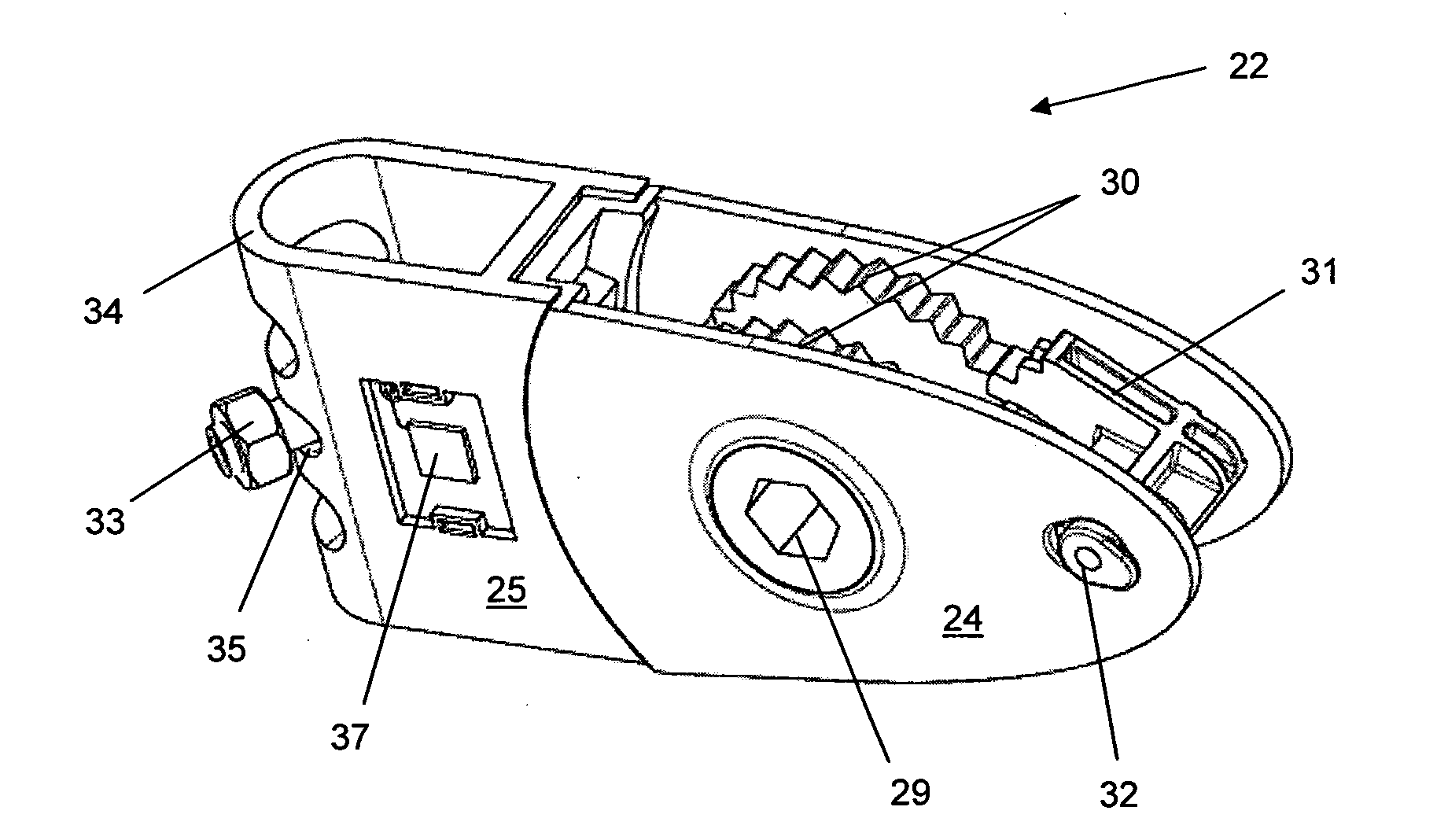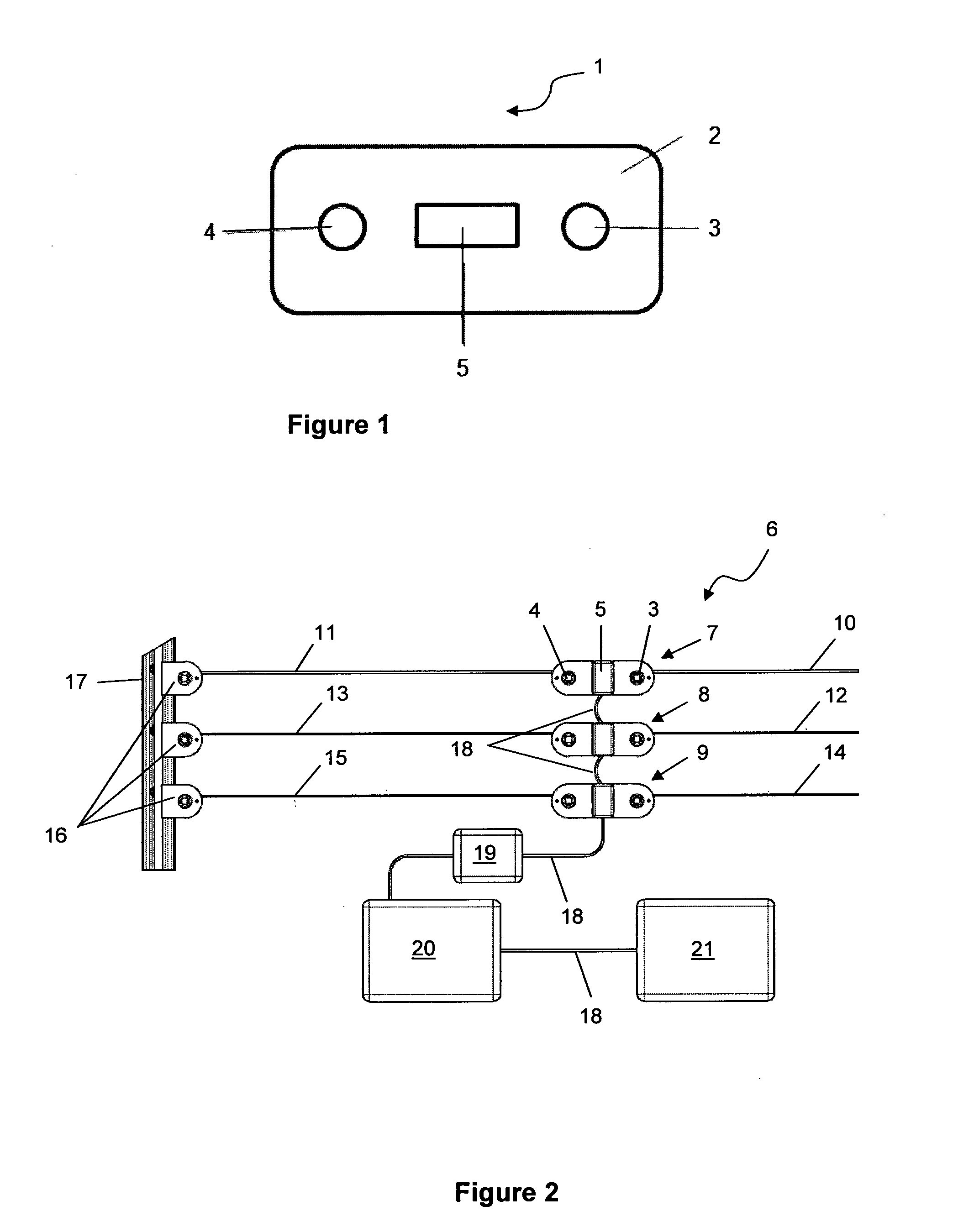Taut Wire Fence System
a technology of wire fence and wire fence, which is applied in the direction of burglar alarm mechanical actuation, instruments, force/torque/work measurement apparatus, etc., can solve the problems of reducing the sensitivity of the sensor to a change in tension, the device to be mounted on the support post cannot detect tampering activities through electrical disturbance,
- Summary
- Abstract
- Description
- Claims
- Application Information
AI Technical Summary
Benefits of technology
Problems solved by technology
Method used
Image
Examples
Embodiment Construction
[0116]A connector according to one embodiment of the present invention is generally indicated by arrow one in FIG. 1. The connector 1 includes a main body member 2 which is formed as a single member from a rigid plastics material such as high density polyethylene or polyester, or a glass filled nylon material.
[0117]The main body member 2 includes a first engagement proportion 3 configured to attach to a wire (not shown) of a taught wire fence and a second engagement portion of 4 also configured to attach to a wire of the taught body fence system (not shown). When used with an electric fence system the first and second engagement portions (3 and 4) are automatically electrically insulated from the plastic main body member 2.
[0118]A sensor, 5, including a thick film resistor paste strip mounted on a metal plate which is firmly attached to the main body member 2, is located between the first (3) and second (4) engaging portions such that the first engagement portion (3), the sensor 5 a...
PUM
| Property | Measurement | Unit |
|---|---|---|
| Temperature | aaaaa | aaaaa |
| Force | aaaaa | aaaaa |
| Dimension | aaaaa | aaaaa |
Abstract
Description
Claims
Application Information
 Login to View More
Login to View More - R&D
- Intellectual Property
- Life Sciences
- Materials
- Tech Scout
- Unparalleled Data Quality
- Higher Quality Content
- 60% Fewer Hallucinations
Browse by: Latest US Patents, China's latest patents, Technical Efficacy Thesaurus, Application Domain, Technology Topic, Popular Technical Reports.
© 2025 PatSnap. All rights reserved.Legal|Privacy policy|Modern Slavery Act Transparency Statement|Sitemap|About US| Contact US: help@patsnap.com



